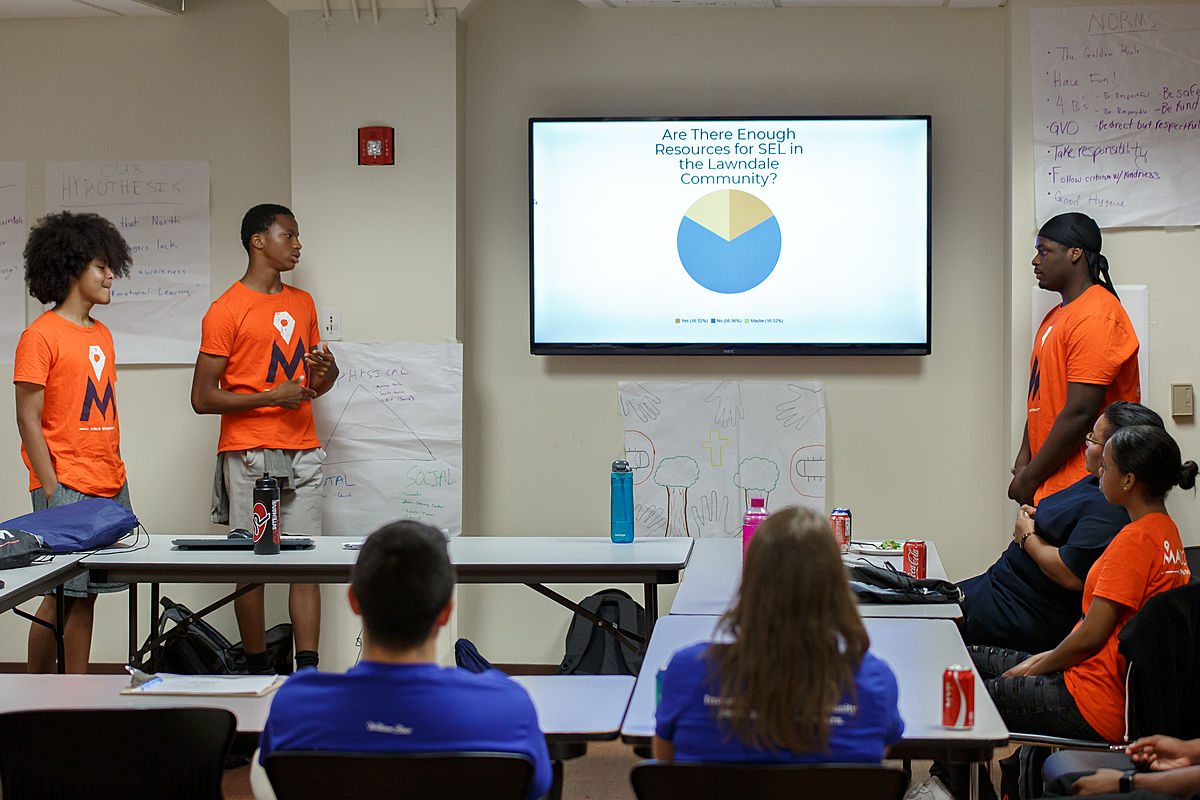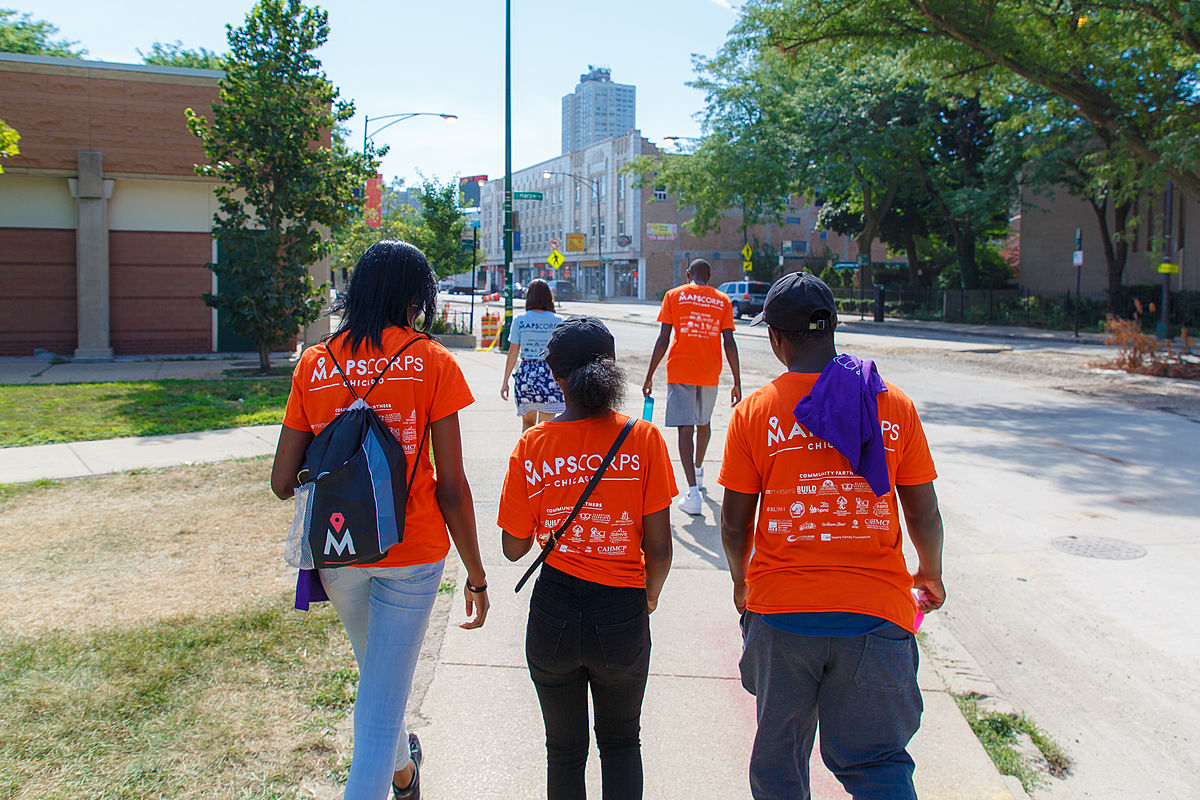“Information is power,” says Andres Alvear, executive director of MAPSCorps. An independent nonprofit organization that grew out of UChicago research, MAPSCorps trains youth to use the tools of science and technology to gather high-quality information that empowers communities to improve life for everyone.
The seeds of MAPSCorps were planted a decade ago when a group of University population health researchers led by Stacy Tessler Lindau, MD, MAPP, dug into the question of what makes communities healthy.
They theorized that health isn’t simply the absence of disease. It’s also the presence of physical, mental and social well-being, supported by community resources that provide residents with what they need to get well and stay well — everything from health care and social services to churches, child care, and grocery stores that sell healthy food.
When the research team met with partner community organizations to review the available data about resources on Chicago’s South Side, the partners quickly pointed out that the data were wrong: Some resources had closed, others had opened, some were listed incorrectly, many were missing. In fact, the data failed to accurately capture 40 percent of active resources. The research team needed a better data set; the partners suggested hiring local young people to collect it, and MAPSCorps (Meaningful, Active, Productive Science in Service to Communities) was born.
Since 2009, teams of paid high school students paired with college student mentors have set out each summer to map resources, a project that began on Chicago’s South and West Sides and has now expanded to the North Side, as well as New York, Michigan, and North Carolina. Every day for six weeks, they cover about five miles on foot, record each public-facing business and organization in the custom-built MapApp, and discuss what they’ve observed.
The high schoolers gain skills in communication, critical thinking, and employment (for many, MAPSCorps is their first paid job). They also learn key proficiencies related to STEM and the scientific method: In addition to collecting data, they identify a community issue, form a hypothesis, analyze their data, and make recommendations. The summer culminates in a MAPSCorps Scientific Symposium where teams present their work to researchers, community partners, and the public.

The data students collect are cleaned and made publicly available for use by researchers, community organizations, government agencies, and others. For example, NowPow uses the data to help health care providers and community organizations connect their patients and clients to local resources for improving health. And the Cook County Land Bank Authority uses it to map vacant properties and promote their redevelopment and reuse to revitalize communities. So far, MAPSCorps teams have mapped 55 of Chicago’s 77 community areas, building a data set of more than 35,000 active assets.
More than 90 percent of the high school students who have worked on MAPSCorps teams are African American and Latino students from high-poverty communities. Their summer experience has a long-lasting impact: 90 percent are pursuing college, and nearly 60 percent have chosen STEM majors or careers. And many MAPSCorps undergraduate student mentors report that they have gone on to careers in medicine, public health, health IT, and related work.
As MAPSCorps has grown, its collection of partners has grown as well. Within the University, partners include the Office of Civic Engagement and its University Community Service Center, the Survey Lab, and the College; outside the University, partners include After School Matters, City Colleges of Chicago, Chicago Department of Family & Support Services, Chicago Department of Public Health, and many small community development and youth development organizations across the South and West sides.
"MAPSCorps' partnership with The University of Chicago brings its world-class students, networks, and resources to community, strengthening our impact." - Andres Alvear




